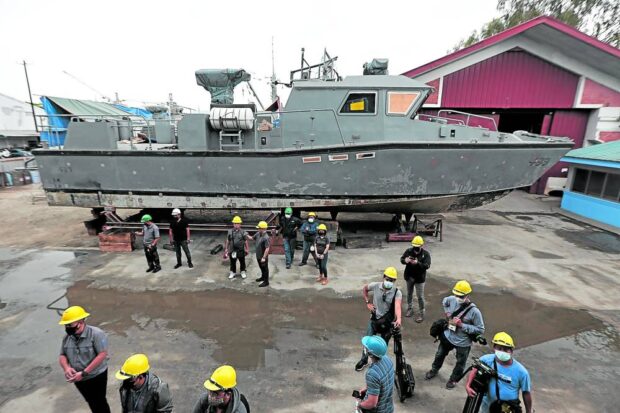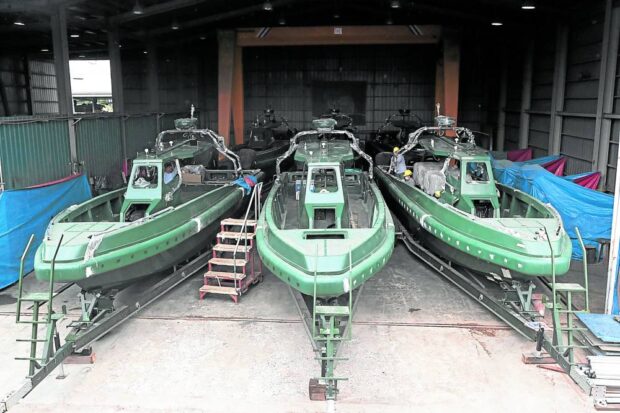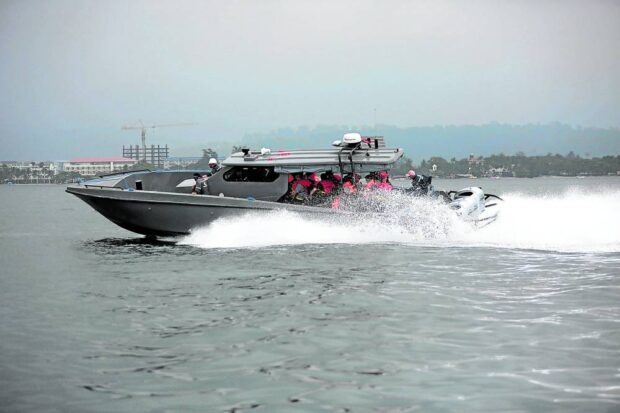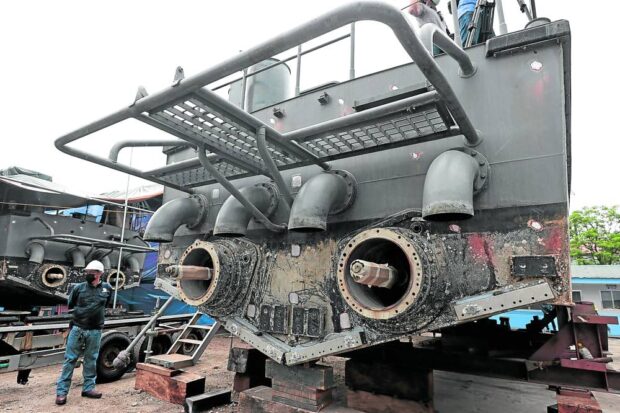Helping PH defense catch up, one boat at a time

PARTNER INMODERNIZATION | Propmech, a family business operating from the Subic Bay Freeport since 1991, has bagged multibillion-peso contracts with the military, police, coast
guard, and the fisheries bureau. It has been supplying the Philippine Navy in particular with multirole vessels based on its design requirements, with missile-capable models being its
current flagship product. (Photo by GRIG C. MONTEGRANDE / Philippine Daily Inquirer)
SUBIC BAY FREEPORT, Philippines — A local shipbuilder here believes it’s about time a maritime nation like the Philippines became more self-reliant in its naval and coastal defense requirements.
The government has taken initial steps in this direction but “a lot still needs to happen,” according to Glenn Tong, director of Propmech Corp., a company that has built more than a thousand vessels for the Philippine Navy and other government agencies.
Propmech built the Navy’s first-ever missile-capable boats—the 17-meter multipurpose attack craft (MPAC), which it considers its flagship product. With speeds of up to 45 knots (83.3 kilometers per hour) and an operational range of 650 km on a full tank, it is widely used for patrols, logistics, antiterrorism missions, search and rescue, and interception.
“We have the potential to be a great shipbuilding and maritime nation. It’s sad that a lot of our products still have to come from abroad. You never know what will happen in the future, whether supplies are difficult to get, whether it’s difficult to travel again, or should there be conflict,” Tong told reporters as he gave a tour of the company shipyard on Thursday.
“For the Philippines, it behooves us — and it is to our advantage — to be able to maintain our own equipment for disaster purposes, for emergencies or should there be a conflict. It will also help the Philippine industry by creating more (job) opportunities, creating a good ecosystem where we can support not only the government but also commercial needs,” he said.
Article continues after this advertisement
Photo by GRIG C. MONTEGRANDE / Philippine Daily Inquirer
Order from Marines
During the media tour of the shipyard, Propmech highlighted its ongoing work on the latest batch of watercraft for the military. For a contract price of P338 million, the company is making a total of 16 vessels for the Philippine Marines, which in 2021 placed an order for speedboats with hulls measuring 12.5 meters in length, considered ideal for operations in shallow waterways or near shorelines.
Article continues after this advertisementThe Department of National Defense has long aspired to become less dependent on foreign support, but lack of funds continues to hamper its research and development efforts. With one of the weakest militaries in the region, the country made its first major attempts to build its own defense industry during the regime of President Ferdinand Marcos Sr. in the 1970s, but these early steps lost momentum due to several factors.

Photo by GRIG C. MONTEGRANDE / Philippine Daily Inquirer
Family business
Propmech Corp., a family business run by Tong with over 900 employees, started off as a distributor of marine engines in 1991 before it expanded its services to vessel refurbishing, boat building, and maintenance in 2003.
According to the company, it has since entered into contracts worth about P20 billion with various agencies, mainly the Navy, Philippine Coast Guard, Philippine National Police, and Bureau of Fisheries and Aquatic Resources.
It is currently offering to supply additional missile-capable assault craft that it said would meet the Navy’s requirements under the Horizon 3, or the last phase of the modernization program of the Armed Forces of the Philippines.
Based on the Navy’s acquisition plan, it needs 36 more missile-capable MPACs for quick-reaction or short-range missions. Out of the 12 such vessels in its fleet, only six are currently in actual service.
The goal to acquire a total of 42 missile-capable MPACs, a target based on the number of littoral (near shoreline) monitoring stations across the country, where ideally there should be at least two boats per station.

Photo by GRIG C. MONTEGRANDE / Philippine Daily Inquirer
First missile test
The vessels will complement the nine 32-meter fast-attack interdiction craft (FAIC) procured from Israel for P10 billion, which are intended for territorial and coastal patrol operations. There are currently two fast patrol boats in service, while another two were delivered recently and will be commissioned into service in the coming weeks.
According to a source privy to the Navy acquisition plan, the service should have at least 24 FAIC vessels ready at any given time based on the number of choke points across the archipelago. MPAC and FAIC teams also have the versatility for open-sea interceptions and as a “swarming force” during territorial defense operations.
It was only in 2018 that the Philippine Navy test-fired a missile for the first time in its history, and it was from one of the MPACs made by Propmech.